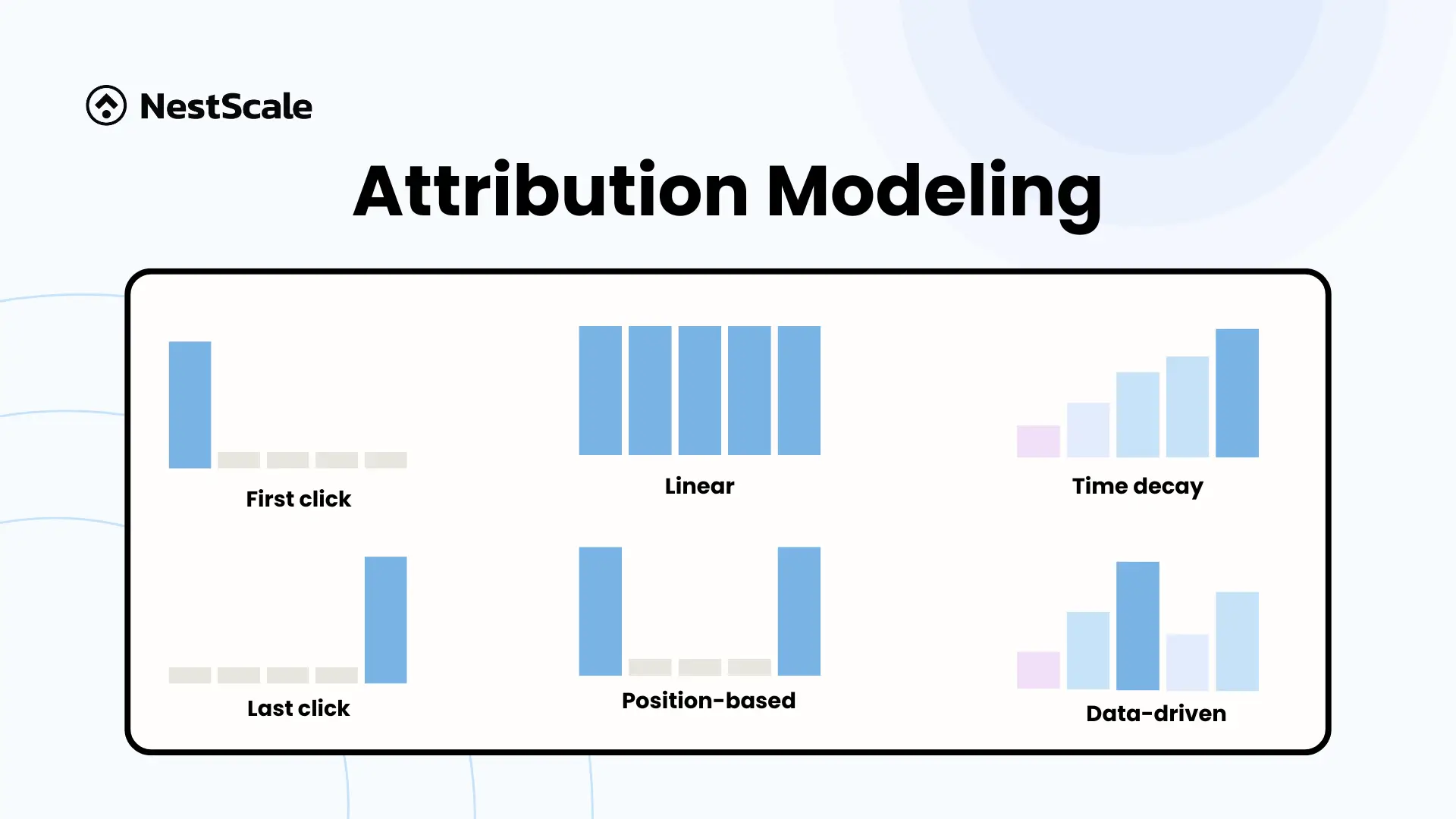What is attribution modeling?
Attribution modeling is the process of assigning credit to the different steps or touchpoints a customer goes through—such as seeing an ad, clicking a link, or reading an email—before completing a sale or conversion. It helps businesses understand the role each interaction plays in influencing customer decisions, enabling you to optimize your strategies and maximize ROI. Different models provide unique insights, helping you see which strategies are truly driving results and which ones need improvement.
In short, attribution modeling helps businesses answer an important question: Which of my marketing efforts really made a difference in getting this sale?

Example of attribution modeling
A Shopify store owner selling stoves online is leveraging multiple channels, including running ads on TikTok and Google, as well as maintaining an organic blog. The customer first discovers the store by reading a blog post, later sees a TikTok ad, searches for the product on Google, and finally makes a purchase by clicking on a Google ad targeting that keyword.
Depending on the attribution model you choose and whether your focus is on conversions or impressions, the credit for the final sale will be assigned to either the blog, Google Ads, or distributed equally across all touchpoints to reflect the full customer journey.
Types of marketing attribution model
Attribution modeling assigns credit to touchpoints based on the chosen model. Marketing attribution models are typically grouped into two main categories: Single-Touch Attribution Models and Multi-Touch Attribution Models. Below are the most common types:
Single-touch attribution models
- First-click attribution: All credit goes to the first interaction.
- Last-click attribution: Full credit is given to the final touchpoint.
- Last non-direct click attribution: Attributes the conversion to the last touchpoint the customer engaged with, excluding any direct visits.
Multi-touch attribution models
- Linear attribution: Credit is distributed equally across all interactions.
- Time-decay attribution: More credit is assigned to touchpoints closer to the conversion.
- Position-based (U-shaped) attribution: Highlights the first and last interactions, while middle touchpoints share the remaining credit.
- Data-driven attribution: Uses machine learning to assign credit based on historical data.
- Custom attribution: Allows businesses to define their own rules for assigning credit based on unique goals or customer behaviors.
Example: If a customer clicks on a Google ad, engages with a social media post, and finally converts after receiving an email, the attribution model determines how much credit each touchpoint receives.
Why is attribution modeling important?
Using attribution modeling can help you:
- Identify high-performing channels: Understand which platforms drive the most value.
- Optimize campaign ROI: Allocate your marketing budget to the most effective campaigns.
- Understand customer behavior: Gain insights into how customers move through the sales funnel.
- Improve decision-making: Make data-driven choices to refine your marketing strategy.
Tools for attribution modeling
To implement attribution modeling effectively, consider using the following tools:
- Google Analytics 4 (GA4): This is a powerful tool for marketing attribution, offering advanced models like data-driven attribution. It tracks customer journeys across devices and platforms, making it a valuable option for website analytics. However, it can be a little bit tricky to set up at first.
- Native ad platforms: Many ad platforms, like Facebook and TikTok Ads, offer built-in attribution tools for campaign tracking and performance measurement. While these tools are highly convenient, they may not provide a complete perspective as they focus solely on the platform’s native ecosystem.
- Third-party attribution tools: Third-party attribution tools offer an unbiased view of your marketing performance by integrating data from multiple platforms, giving you a full picture of the customer journey.
These tools help you visualize customer paths, analyze performance, and assign credit accurately.
FAQs
Q1: What is the best attribution model for my business?
A: It depends on your goals. For awareness, use first-click attribution; for conversions, last-click might be more relevant. Data-driven models offer the most accurate insights for complex journeys.
Q2: Can attribution modeling work for small businesses?
A: Absolutely! Attribution modeling is highly beneficial for small businesses too. By understanding which marketing channels drive conversions, small businesses can make smarter decisions, optimize budgets, and focus on strategies that deliver the best results.
Q3: How often should I review my attribution model?
A: Regularly—monthly or quarterly—to adapt to changes in customer behavior and marketing strategies.












































